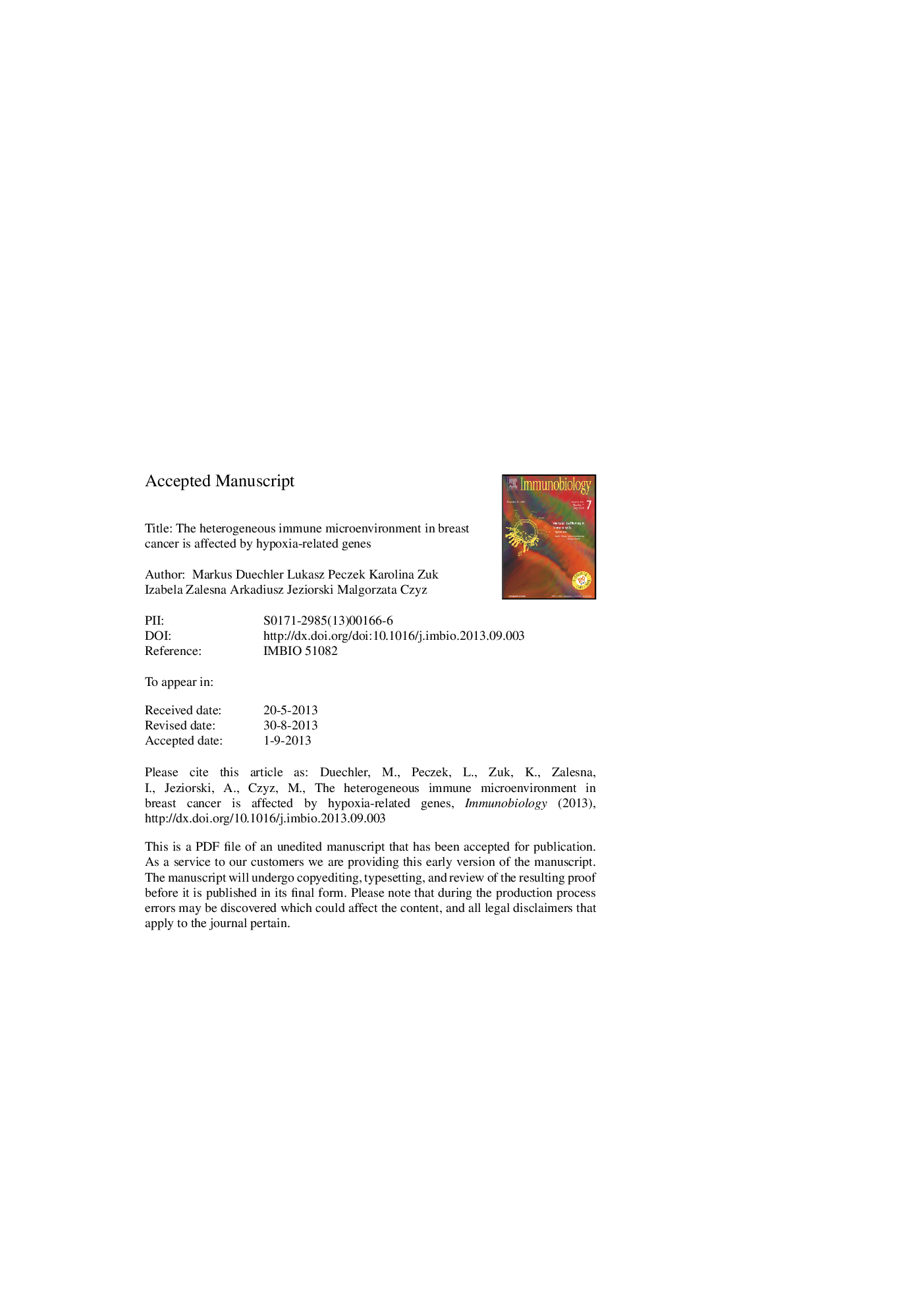| Article ID | Journal | Published Year | Pages | File Type |
|---|---|---|---|---|
| 10940968 | Immunobiology | 2014 | 41 Pages |
Abstract
The immune system constitutes an important first-line defence against malignant transformation. However, cancer mediated immunosuppression inactivates the mechanisms of host immune surveillance. Cancer cells shut down anti-cancer immunity through direct cell-cell interactions with leukocytes and through soluble factors, establishing an immunosuppressive environment for unimpeded cancer growth. The composition of the immunosuppressive microenvironment in breast tumours is not well documented. To address this question, selected immunosuppressive factors were analyzed in tumour specimens from 33 breast cancer patients after surgery. The mRNA expression of selected genes was quantified in fresh tumour samples. Tumour infiltrating leukocytes were characterized by flow cytometry to identify regulatory T cells, myeloid derived suppressor cells, and type 2 macrophages. Statistical analysis revealed several interesting correlations between the studied parameters and clinical features. Overall, a surprisingly high degree of heterogeneity in the composition of the immunosuppressive environment was found across all breast cancer samples which adds to the complexity of this disease. The influence of the hypoxia inducible factors (HIFs) on the immune microenvironment was also addressed. The level of HIFs correlated with hormone receptor status and the expression of several immunosuppressive molecules. Targeting HIFs might not only sensitize breast tumours for radiation and chemotherapies but also interfere with cancer immunosuppression.
Keywords
STAT-3IDO-1TGF-βMDSCPPIAEpCAMHIFHeme oxygenase-1IL-10PGRFOXP3HO-1TBPInterleukin 10indoleamine 2,3-dioxygenaseTILTAMTransforming Growth Factor BetaHuman breast cancerNK cellNatural killer cellMyeloid-derived suppressor cellsTreg cellsRegulatory T cellsVascular endothelial growth factorVascular Endothelial Growth Factor (VEGF)Hypoxia Inducible Factorsignal transducer and activator of transcription 3epithelial cell adhesion moleculeImmune microenvironmentSurgical specimenTATA-box binding proteinEstrogen receptorProgesterone receptor
Related Topics
Life Sciences
Biochemistry, Genetics and Molecular Biology
Cell Biology
Authors
Markus Duechler, Lukasz Peczek, Karolina Zuk, Izabela Zalesna, Arkadiusz Jeziorski, Malgorzata Czyz,
